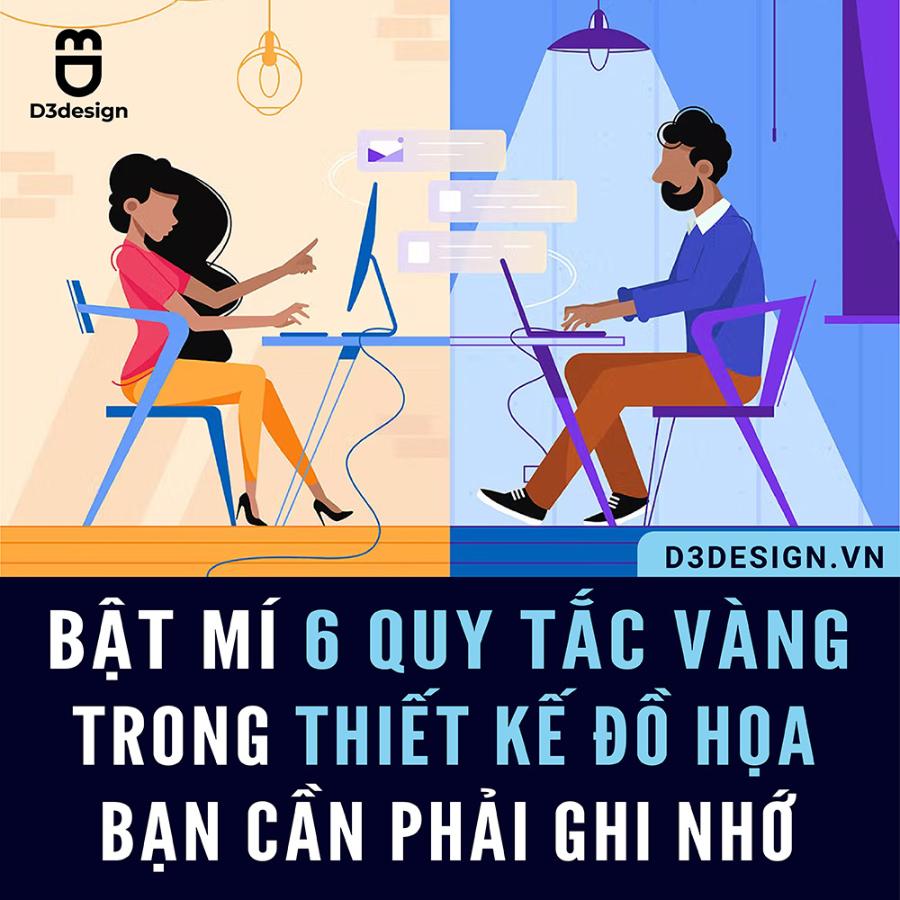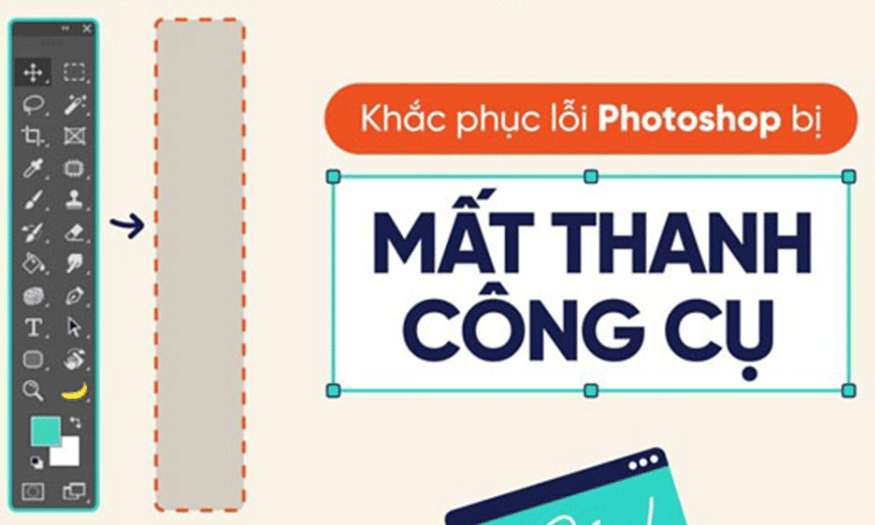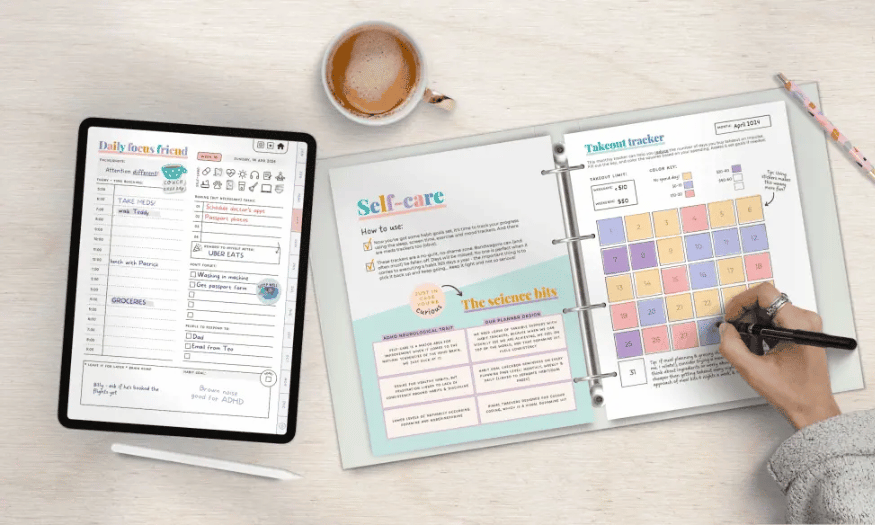Best Selling Products
Revealing 6 Laws In Design You Should Never Break
Nội dung
- 1. Proper alignment
- 1.1. Why is alignment important?
- 1.2. Basic types of alignment
- 2. Always use a grid
- 2.1. Benefits of using grids
- 2.2. How to use the grid effectively
- 3. Design is for the customer
- 3.1. Identify user goals
- 3.2. Focus on user experience (UX)
- 3.3. Don't forget the emotional factors
- 4. Don't let words and sentences stand alone.
- 5. Choose the right color
- 6. When designing, sometimes it is not necessary to follow trends.
- 7. Conclusion
Basic design principles can help you create impressive and effective products. This article will share important design rules that you need to avoid to ensure aesthetics and effectiveness in your creative work.

Design is a field that requires constant creativity, but to have a perfect design product, not only creativity is required but also adherence to basic principles. In this article, we will reveal 6 important design rules that you should not violate to make your product professional and attractive to viewers. Let's explore with Sadesign !
1. Proper alignment
Aligning elements in a design not only helps create balance, but is also one of the basic rules in all types of design. When designing any graphic product, from websites to prints, arranging elements in a reasonable and scientific way will help easily attract the attention of the viewer.
A good design cannot lack balance in the alignment of elements, from images, text to other graphic components. Alignment helps users easily receive the information you want to convey, while creating a pleasant feeling when looking at the product.
1.1. Why is alignment important?
Alignment helps create consistency throughout the design, which improves the user experience. Design elements such as text, images, and graphics will not look cluttered if they are properly aligned. Inconsistent alignment can create a sense of insecurity, lack of order, reduce aesthetic value, and make it difficult to understand the message.
.jpg)
1.2. Basic types of alignment
Center Alignment: This is a popular alignment method that helps create a balanced and comfortable feeling.
Left Alignment: This is an alignment style that helps readers easily follow information, especially when working with text.
Right Alignment: Although less common, right alignment can sometimes be effective in creative designs or when you want to highlight certain elements.
2. Always use a grid
Using a grid in your design is an important way to control the layout and alignment of elements in your product. A grid is not only a tool to help you create appropriate spacing between elements, but it also helps you maintain consistency across all your designs.
2.1. Benefits of using grids
Grids help you create designs that are easier to read and understand. Grids provide stability to your designs, allowing elements to be distributed evenly and logically across the entire page or product. This not only makes it easier for you to control the elements, but also gives users a smooth experience when interacting with the product.
(1).jpg)
When using a grid, you can also easily divide the space, thereby creating clear areas, helping viewers quickly identify important parts of the design product.
2.2. How to use the grid effectively
To use grids effectively, you need to understand their basic principles. Grids don't have to be visible on your final design, but you do need to use grid lines to align elements correctly.
Simple Grid: A grid with vertical and horizontal lines makes it easy to align text or image elements.
Divider Grid: Used when you want to divide the layout into clearer sections, making it easier for users to identify information.
3. Design is for the customer
One of the biggest mistakes in design is focusing on personal preferences without putting yourself in the shoes of the user. Design is not an expression of the individual, but a tool to convey a message to customers, solve problems they encounter, and create a pleasant user experience.
(1).jpg)
When designing, you need to always remember that the end user of your design is your customer. Design decisions must be focused on the needs, preferences, and behaviors of your target audience. If your design does not meet these requirements, you will end up with an ineffective design that will not attract the attention of your customers.
3.1. Identify user goals
Every design project has a specific target audience. Before you start, you need to do thorough research and clearly identify who your target audience is. Factors such as age, interests, habits, and usage needs will help you create a suitable design, making your product easily accessible to users.
3.2. Focus on user experience (UX)
A successful design is not only beautiful but also easy to use. User experience (UX) plays an important role in evaluating the quality of a product. A good design should ensure that users can easily interact with the product without any difficulties. Therefore, you need to pay attention to usability, page loading speed (in web design), and simplicity in accessing information.
3.3. Don't forget the emotional factors
While design may be based on scientific principles, the emotional impact of a product is what connects users to a brand. Colors, images, and shapes must be chosen to match the message you want to convey and create a positive impression on customers.
4. Don't let words and sentences stand alone.
In design, using words and sentences appropriately and easily understood is one of the important factors to create a complete product. Words and sentences that are "isolated" or not connected to each other will make your design lose coherence and consistency.
(1).jpg)
When you design a website, logo, brochure, or any other form of communication, each word and sentence must have a clear role and be connected to the rest. A sentence that is out of place and not well-placed can be distracting and distracting.
One effective way to avoid this situation is to always remember that each piece of content must have a clear purpose and be connected to other design elements. From there, create a unified, coherent whole. This will help users easily receive information, while increasing the professionalism of the product.
To avoid this mistake, always check the content elements when combining with graphic design. Make sure that the text and image elements are always logically arranged, closely linked and there are no "out of place" elements in your design.
5. Choose the right color
Color not only plays an aesthetic role but also directly affects the user's emotions and interactions with the product. A common mistake in design is the inappropriate choice of color, leading to the product becoming less impressive or difficult to see.
(1).jpg)
When choosing colors for your design, it’s important to understand color psychology and how each color can affect the viewer’s emotions. For example, red often conveys a sense of energy and power, while green conveys a sense of relaxation and comfort. Choosing the right colors will not only make your design beautiful, but also accessible and impactful to your audience.
It is important to strike a balance between the colors in your design. A color scheme that is too bright or too dark can be tiring to use, while a harmonious color scheme will increase readability and communication effectiveness.
Additionally, when choosing colors for your website design, you also need to pay attention to usability and contrast. Elements such as background color and text color must have a clear contrast to ensure that the content is always clear and easy to read.
A reasonable color design will not only help increase aesthetics but also support optimizing user experience. So make sure you always choose the right color for each specific project.
6. When designing, sometimes it is not necessary to follow trends.
Design trends change constantly, and while keeping up with new trends can keep your product fresh, they may not always be relevant to your purpose and audience. Overly following trends can result in a product that lacks originality and differentiation.
(1).jpg)
Sometimes, maintaining a consistent and sustainable design style is more effective than chasing ever-changing trends. It is important to understand the purpose of the design and ensure that it best serves the needs of the user.
Instead of following every trend, consider choosing design trends that fit the long-term vision of the project. Sometimes, simple designs that are both aesthetically pleasing and functional will always retain their value over time.
Especially if you are designing for a brand, make sure your design reflects the brand’s core identity and values, rather than just following current design trends. A truly successful design is one that can last a long time without needing to be changed just because of a passing fad.
7. Conclusion
The above article has shared 6 rules in design that you should not violate. If you want to have high quality design products, do not hesitate to contact SaDesign. We understand the importance of every detail in design and are always committed to bringing standard products, fully meeting customer requirements.












































